After what seemed like an eternity, we arrived in Basel, Switzerland. We drove from Basel to the beautiful little town of Breisach, Germany. While Jim rested, I took off with a couple we had met, to explore. The picture above is a little hotel we passed on the way into town from the river.
We stopped to get out of the rain at this charming little pub. There was a big lab laying in the floor to greet us. His name was Gonzales. He moved and sat beside whoever was the newest person to enter the pub.
The Hotel Shiff (Ship) had a Chinese restaurant.
This was the City gate of Breisach. Surprisingly it was the only building left standing at the end of WWII.
There was a beautiful cathedral high on the hill, I got this picture, but was too tired to make the walk up the hill.
I love windows. They have a character of their own and tell a little bit about the people living behind them.
More windows.
I wondered why this clock faced to the outside--not much use to its residents.
The residences on the other side of the City gate in Breisach.
Looking through the city gates.
On the Danube and the Rhine, there are wild swans everywhere. This is a juvenile swan, a singlet. You can tell because his feathers are still mottled in color and not the silky white of the adult swans.
This must had been Mom, the singlet was following her around.
Our next adventure was to the Black Forest. I had heard my dad talk about the Black Forest from his WWII stories. We did not, however see much of the Black Forest because the fog was so thick. We could see to about the edge of the two lane road and that was all. They guide was at a loss of what to say, since we could see nothing, she babbled on about her neighbors. A little silence would have been appreciated!
We stopped at an outrageously overpriced Cuckcoo clock shop and could see the clerks drooling (more victims) as we walked in. I looked around at Jim. He was feeling light headed, so we sat down and enjoyed the little inn, while everyone went into the shop. There were no pictures at this stop.
The next stop on the Rhine took us into France and the delightful city of Strasbourg. Strasbourg has changed from being part of Germany and then back to France eight different times.
This is the City gate of Strasbourg, France. The buildings in the old part of Strasbourg, are called La Petit France. They were built from the 1200s to the 1400s. They were so charming. I spent a day wandering the streets. Checking out the pastry shops and visiting the Cathedral.
LaPetit France is surrounded by the river. The only vehicle traffic is that of service vehicles bringing things to the stores. They have to be gone by 10 AM like in Vienna.
Some of the building were immaculately kept and some were falling into disrepair.
This gentleman was doing maintenance on his window.
This is the restaurant in one of the famous inns in the city.
This is the main shopping part of the city. The shops were delightful. I found if I tried to use my French, they seemed very pleased and would help me out, and then speak English to me.
While we were in Strasbourg the River was lower than it had ever been in recent years.
A tree ont he river.
More windows.
November 4th and ecorating for Christmas was in full swing. They were getting ready for the Christmas markets.
The orange building is an elementary school. We could see the children playing through an iron gate. When I started to take their picture, in English they yelled, "No pictures, no pictures!" In Germany adults are very sensitive about tourists taking pictures of their children, and since Strasbourg is right on the border I guess it is true here too.
One of the beautiful pastry shops.
Getting close the the newer part of the city.
The statue of Gutenburg and his Bible.
A city street
A restaurant.
The details on the buildings were beautiful.
The Strasbourg Cathedral. It is similar to Notre Dame in Paris, with only a few minor changes.
The front of the cathedral in the foggy morning.
Side of the cathedral.
Window of the cathedral.
Storks are part of the national pride in this part of France, Germany, and the Netherlands. They were becoming extinct because so many were dying on their long migration to Africa. With that, the people started to heat spots on their roofs so the storks would stay for the winter. I have several stork pictures further down in the post.
As we walked down the street this older gentleman threw open his window and waved at our group.
There were many things for sale on the street. We were told to be very careful of the Hungarians. They were dressed very strangely and were aggressive.
I love this window. I could imagine sitting in the window seat reading book.
I met thèse two couples on the trip. The were from Cape Cod, Massachusetts.
This lady had the same name as my grandaughter, Maisie, and even spelled it the same.
Another quaint Strasbourg Street.
The windows on this pub looked like the bottoms of liquor bottles on the bottom two floors.
The front door of the bottle bottom pub--my name for it not theirs :)
Looking across the Rhine as we headed out of Strasbourg.
This is a fort on the Rhine in Strasbourg that has never been used. Consequently it was turned into a business park. They don't tear down buildings like we do, they just figure out a new use for it. Originally it was 5 times larger than it is now
The next group of pictures are the scenes as we cruised along the river to the castles.
Then we began to see the castles.
Reichenstein Castle
This little town was where I stayed when I was in Germany in 1974.
Stagkeck Castle
This is one of the castles the people still occupy.
The Marksburg Castle. The castle at Disney World in Japan is supposedly an exact copy of it.
The part we toured was at the highest level. I have included some pictures of the inside. This is not one of my photos. I got it off the internet because I could not get far enough away from it to take a picture with the lens I had.
This was our tour director..Rene from the Netherlands.... and yes his glasses lenses are shaped like fish. On this stop we were able to tour the Marksburg Castle. It is the only castle that has never been damaged or destroyed and that has been occupied continuously for 700 years.
The floors of the castle were made of slate so that the horses would able able to walk on them. Some of the doors inside the castle had extensions on the top of the doorway that would open. This was so that th knights could come into the castle quickly still on their horses.
The guard house at the top of the Marksburg Castle
The part sticking out of the wall....the potty room.. open at the bottom.
This was the peep hole in the upper wall where the guards would look out for enemies.
A door into the castle.
Looking up at the castle.
The different family shields of the families who have lived in the castle.
A 700 year old door.
The stripes on the shutters are the colors of the family crest.
One of the cannons in the castle.
Looking down from the top of the castle.
A very skinny spooky stairway inside. The steps were different depths and different heights. They were made this way so that if and intruder came into the castle, while being chased he would start to run up the stairs and fall down not knowing the steps were uneven. It is about as wide as a woman's shoulders. Men had to turn sideways to get into the stairs.
The dishes in the kitchen
The fireplace in the kitchen. There were no glass in the windows. They were covered with animal skins. It was smelly and dark.
This was a big central open space. There were several small enclaves like this off the large rooms. Each of the enclaves had a different purpose.
More of the kitchen
The spinning wheel on one of the enclaves.
The woodwork on the ceiling of the bedroom.
The potty room, it was like an inside outhouse. It was open at the bottom and "things" dropped into the moat.
The ceiling in the chapel room.
Another of the original doors.
A courtyard.
This was the room with the torture tools. The room was actually the stable. It was under the bedroom so that the heat from the horses would go up into the bedroom.
The top courtyard.
ONE of the doors.
Cologne. Jim waiting for me to "Take the picture already!"
The next stop was in Cologne, Germany. Our ship was docked where when I looked out the window we stared at William the Conquerer. In Cologne they were having What is called Carnival. It was on Nov. 11th which is year gone by had been Armistice Day--a bad memory for Germany. I found Carnival to be a bad memory as well. Every one was dressed in costumes, drunk, and doing things on the street that were disgusting. It was a beautiful city though.
William the Conquerer was just outside my window when we docked.
The beautiful houses along the Rhine in Cologne.
Then we headed to Koblenz.
To get to Koblnz we went brought he City of Mannheim, Germany. During WWII to "Simplify" the street naming system every street had a number, ei. 1. Then each block on the street was numbered. So your street address could be; 4712 129-58. The system was so successful that they never again tried to use it--but it remains in Mannheim.
Looking across the river at Koblenz.
Koblenz had been 80% destroyed during WWII. Most of the city has the "newer" 1960s style buildings.
As the reconstruction of the city was being finished the townspeople decided they needed a monument to tell the history of their 2,000 year old city. This is the monument they decided on. It is like a totem pole. Every layer has something that depicts the most important event in that 200 years. Notice at the very top you can see what looks like billowing clouds. This is for the destruction of WWII. On top you can see the new modern buildings of Koblenz' recovery.
A city street
The drug store
There are 25 of these dormer windows on the old building that used to be the "Latin School". The building now houses the city government offices. These are the Advent Windows. Starting on the 1st of December a window is opened each day dip laying a surprise. Every day the children come by the building to see what is in the window. This continues until Christmas Day.
During WWII there were many children who were fathered by soldiers who went back to their home lands leaving their children behind. These children, not having father at home, were unruly, and called hooligans. This fountain represents those kids. Every three minutes the little boy spits into the fountain.
The WWII story of Koblenz and it's destruction and recovery.
Even the street in Koblenz were lovely.
The statue depicts the WWII widows, raising their children alone.
Another beautiful little street
This street had once housed the prostitutes.
This was an elementary school in Koblenz.
I love the windows on this building--so creative.
The yellow building is another school in Koblenz.
The land changed drastically as we cruised toward the Netherlands. It looked like it almost could have been the Gulf Coast of Texas. There were storks on poles all along the river.Our Netherlands destination was Kinderdijk (pronounced Kinderdike). In this little town all of the windmills pump the water off the land, that land is called polders. There are a group of 19 windmills that do this.
There were two roads going to the windmills and everyone was walking on only the one side. We thought that was odd. Then we found out that the other was a bicycle road. They told us NOT to ever walk on the Bicycle road or you will get run down. Bicycles have the right of way.
Jim by one of the windmills.
During one of the floods a lady lost her goat. She hunted everywhere only to find it on top of a haystack.
Jim and me at the start of the windmill tour.
A window in one of the windmills. then to our last stop Amsterdam.
Small towns and houses along the Rhine heading to Amsterdam.
There were fishermen all along the Rhine after we entered the Netherlands.
The houses are all below the level of the river. Some sit on the levee and others sit just behind it.
Since the windmills are being modernized and the buildings not used any more, some are bring turned into houses as this one is above. It is quite popular among young couples. They can be bought very cheap to be remodeled into a house.
The beloved storks...
Then a sup rising sight.....the ARK! A man built it to Biblical proportions only slightly small so it could navigate the Rhine River and Canals. It is 1/2 as wide and 1/2 as long. It was HUGE though.
The into the harbor in Amsterdam, our last stop.
And finally the party at the end of the cruise, on the ship.
Baked Alaska
The Tovars from Russia but now Americans from New Jersey.
Suzy's husband Bill
Jim and Suzy
Veaisie from Bulgaria, she had just gotten engaged to another employee on the ship that night.


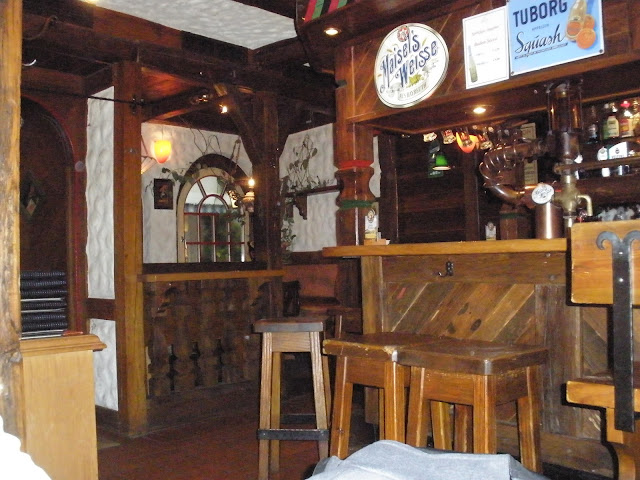













































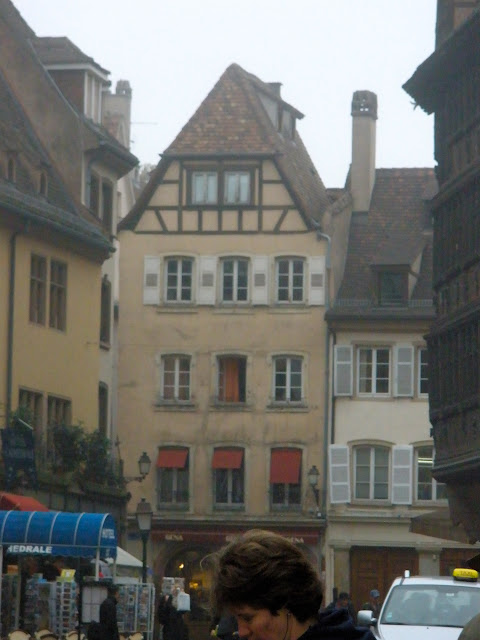


















































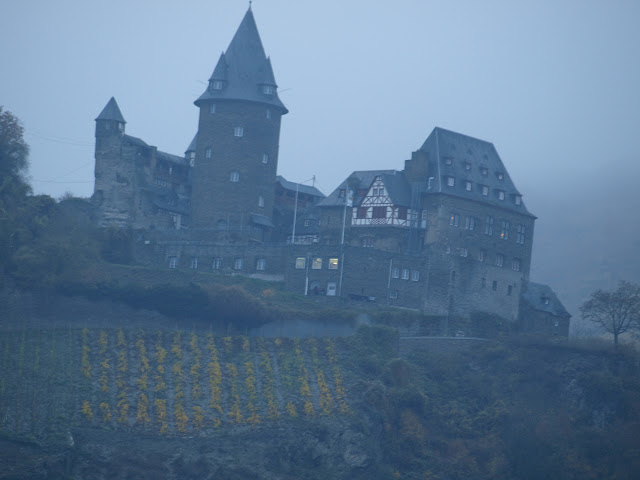
























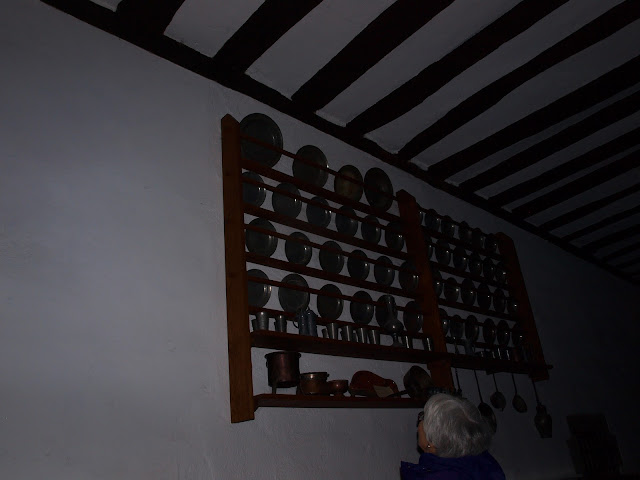















































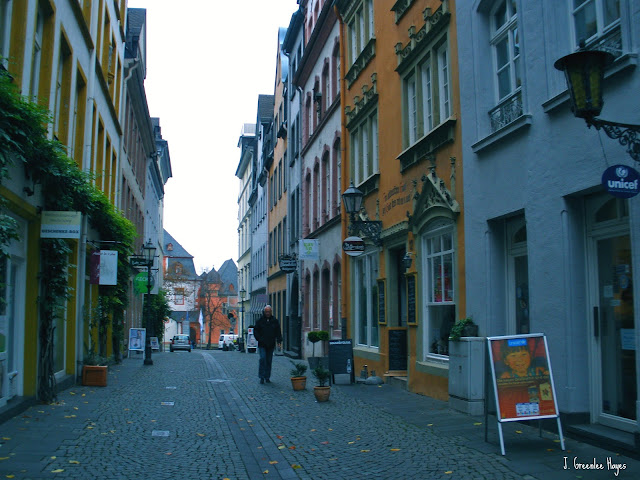















































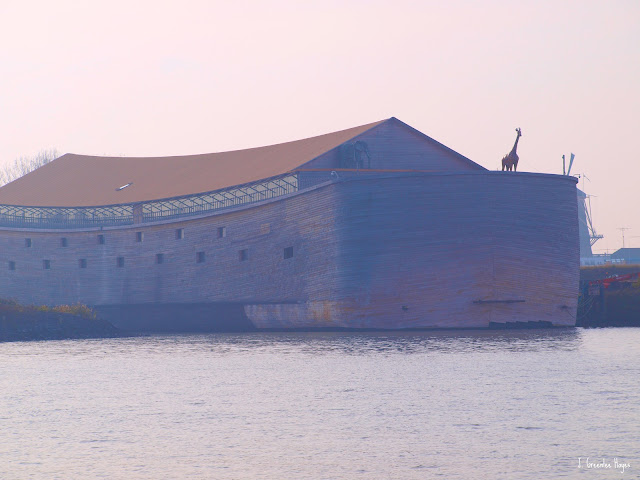














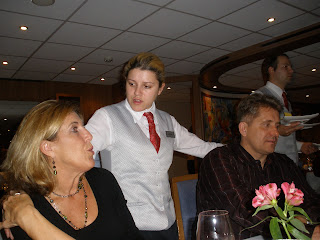

No comments:
Post a Comment